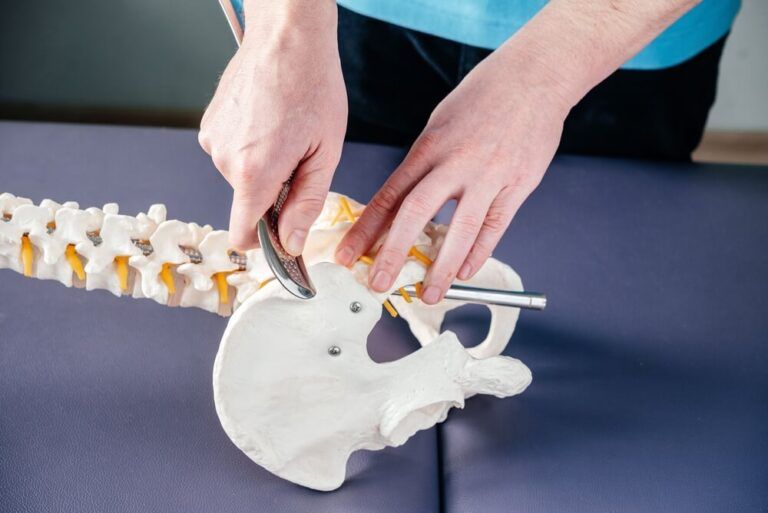Understanding the Sacroiliac Joint and SI Joint Dysfunction

The sacroiliac joint (SI joint) plays a crucial role in connecting the spine to the pelvis. This joint is one of the largest joints in the body. Understanding the anatomy of the SI joint and recognizing SI joint dysfunction is essential for individuals experiencing related symptoms. This educational material aims to provide comprehensive information on the SI joint, the causes of dysfunction, and available treatment options.
Anatomy of the Sacroiliac Joint: The sacroiliac joint is located between the sacrum (the triangular bone at the base of the spine) and the ilium (the large pelvic bone). It is a strong, weight-bearing joint responsible for transmitting forces between the upper body and the legs. Ligaments and muscles surrounding the SI joint provide stability; however, unlike most joints in the body, the SI joint has minimal movement. Whereas most joints such as the shoulders, knees, and hips move around an axis allowing for mobility of the limb, the SI joint is mostly immobile allowing slight separation of the pelvis, which is mostly important when the newborn’s head traverses the birth canal.
SI Joint Dysfunction: SI joint dysfunction refers to a condition where there is an abnormality in the joint’s movement or function. This can lead to pain and discomfort in the lower back, buttocks, and thighs. SI joint dysfunction is one of the most common causes of low back pain. Common symptoms of SI joint dysfunction include pain during movement, stiffness, and potential radiation of pain into the legs.
Causes of SI Joint Dysfunction:
- Trauma: Injuries, such as falls or accidents, can cause trauma to the SI joint, leading to dysfunction.
- Pregnancy: The hormonal changes during pregnancy can affect the ligaments around the SI joint, causing instability and pain.
- Arthritis: Degenerative conditions like arthritis can contribute to SI joint dysfunction by affecting the joint’s cartilage.
- Ankylosing Spondylitis: This inflammatory condition can cause stiffness and pain in the SI joint.
- Connective Tissue Disorders: Certain conditions such as Ehlers Danlos Syndrome in young adults may lead to excessive movement of the joint.
Treatments for SI Joint Dysfunction: Several treatment options are available to alleviate symptoms of SI joint dysfunction. It’s crucial to consult with a healthcare professional to determine the most suitable approach. Common treatments include:
- Cortisone Injections:
- How it works: Cortisone is a powerful anti-inflammatory medication. Injections deliver the medication directly into the SI joint to reduce inflammation and relieve pain. This injection is performed under X-ray guidance to assure delivery of the medication to the correct location.
- Duration of Relief: Cortisone injections may provide temporary relief, and multiple injections may be needed.
- Radiofrequency Ablation:
- How it works: This minimally invasive procedure uses radiofrequency energy to disrupt nerve signals responsible for transmitting pain from the SI joint. Heat is applied to the nerve endings around the joint. This heat destroys the nerves that provide sensation to the joint.
- Duration of Relief: Radiofrequency ablation can offer longer-lasting relief compared to cortisone injections. The nerve endings eventually grow back in about a year. For this reason, radiofrequency ablation is a maintenance therapy that must be repeated approximately once per year.
- Minimally Invasive SI Joint Fusion:
- How it works: Fusion involves stabilizing the SI joint using minimally invasive surgical techniques, reducing abnormal movement and alleviating pain.
- Considerations: This option is typically considered when conservative treatments have not provided sufficient relief.
Conclusion: Understanding the anatomy of the sacroiliac joint, recognizing SI joint dysfunction, and exploring treatment options are essential steps in managing this condition. Individuals experiencing symptoms should seek guidance from healthcare professionals to determine the most effective course of action tailored to their specific needs.


Recent Comments